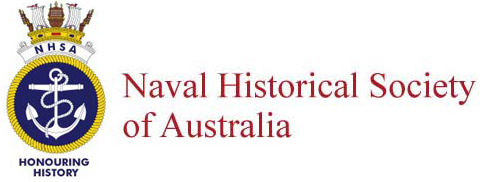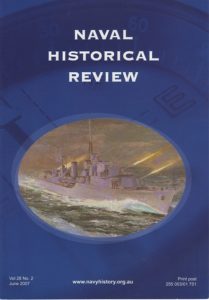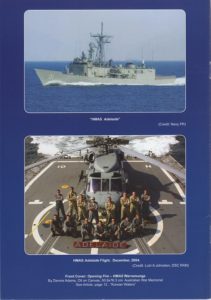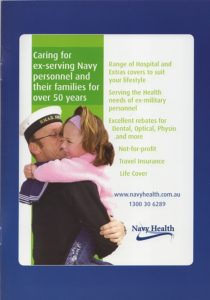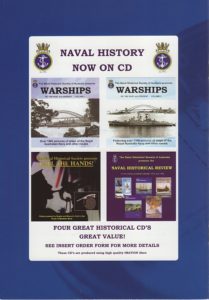By John Jeremy
Warship design in the first two decades of the 20th Century advanced rapidly, with the early introduction of new technology (e.g. the steam turbine for propulsion) and the impetus of World War I. British concerns during the war that Germany was building large and heavily armed destroyers led to the design and construction of the famous V and W classes, of which four were to serve in the RAN during World War II. Intelligence received in 1917 suggested that contemporary German destroyers were less heavily armed than thought, and a smaller and simpler design was adopted for ships to be built under the 1917–1918 programme. These became the Modified Trenchant or S-class destroyers.
Sixty eight S-class destroyers were built, in two orders. Most were to an Admiralty design, but the thirteen ships ordered from Yarrows and Thornycroft were built to very similar designs by those shipbuilders. All were launched in 1918–19 but most were completed too late to contribute to the war.
The Admiralty design had a standard displacement of about 1075 tons and an overall length of 276 feet. All but seven were powered by Brown Curtis single-reduction geared turbines delivering 27 000 SHP for a maximum speed of 36 knots. Steam, at 250 psi, was supplied (in most ships) by Yarrow three-drum water-tube boilers. Three boilers were fitted in each ship.
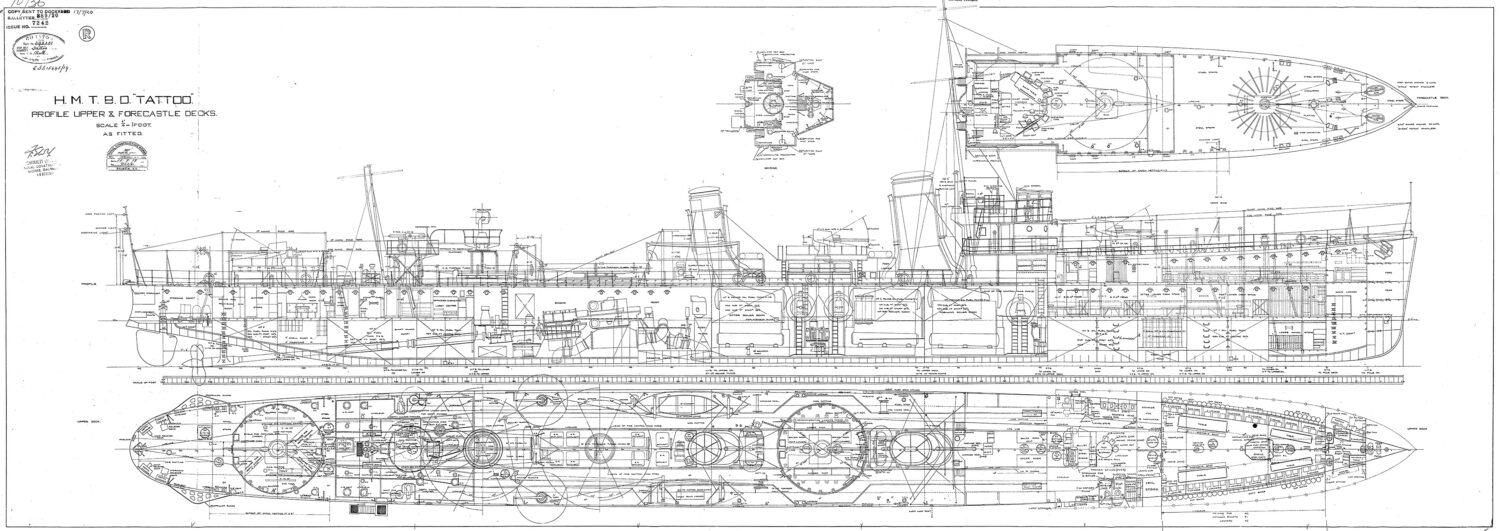
Relatively simple ships, propulsion machinery occupied 43% of the ship’s length (Naval Historical Collection)
Five S-class destroyers were presented to Australia by Britain shortly after completion, along with a flotilla leader which became HMAS Anzac. The destroyers — Stalwart, Success, Swordsman, Tasmania and Tattoo — were commissioned as HMA ships in early 1920 and sailed to Australia with crews largely made up of RN personnel on loan. New ships, they were a timely replacement for the River-class torpedo boat destroyers which were by then obsolete and had worked hard during the war.

The Australian S-class destroyers did not see much service. The declining defence budget of the 1920s and the Depression of 1929 meant that most spent their time laid up in reserve. During the 1930s only HMAS Tattoo saw intermittent service, as a training ship based at the Flinders Naval Depot (HMAS Cerberus) in Victoria. She was replaced in that role by HMAS Vampire in July 1936 when she was paid off.
By the mid-1930s, the future of all the S-class destroyers was under a cloud. The ships had been designed for a life of 20 years, but the estimated boiler life was less. Most were laid up and a programme of scrapping was begun. By the outbreak of World War II only eleven remained in commission, five of which were lost during the war.
The future of the RAN ships was governed by another factor. The Second London Naval Treaty resulted from the disarmament conference held in London in December 1935. Under the Treaty, which was signed by the participating Nations on 25 March 1936, the British Empire was allowed 150,000 tons of destroyers, and the total Empire tonnage of destroyers was required to be within that limit by the end of 1936. The RAN was included as part of the Empire tonnage, and accordingly, as Britain was in the process of building more modern ships, it was essential to scrap the Australian destroyers.
The Admiralty request that the destroyers be scrapped was forwarded to the Commonwealth Government through the High Commissioner in February 1936. The Government’s reply was sent in March in the following terms:
SECRET. Your telegram of 7th February — Imperial No. 21 — His Majesty’s Government in the Commonwealth of Australia concur in the scrapping the five “S” Class Destroyers. Though these vessels were transferred from the Royal Navy, agreement to scrapping is not to be construed as in any way committing Commonwealth Government to their replacement.” [NAA:A5954, 1006/8]

at Cockatoo Island in 1937 or 1938
On 4 June 1937 all five destroyers were sold to Penguin Pty Ltd of Sydney for dismantling and scrapping. During dismantling some equipment was to be retained, and some was offered to engineering schools in Australian Universities.
Towards the end of the stripping process, all five destroyers had a final docking at Cockatoo Island: Stalwart in September 1937, Success in January 1938, Swordsman in November 1937, Tattoo in February 1938 and Tasmania in March 1938. The dockings were presumably for the removal of the valuable propellers and, possibly, shafts. The stripped hulls of the ships were finally sunk at sea off Sydney on 22 July 1939, 20 December 1941, 8 February 1939, 9 May 1939 and 6 March 1939 respectively.
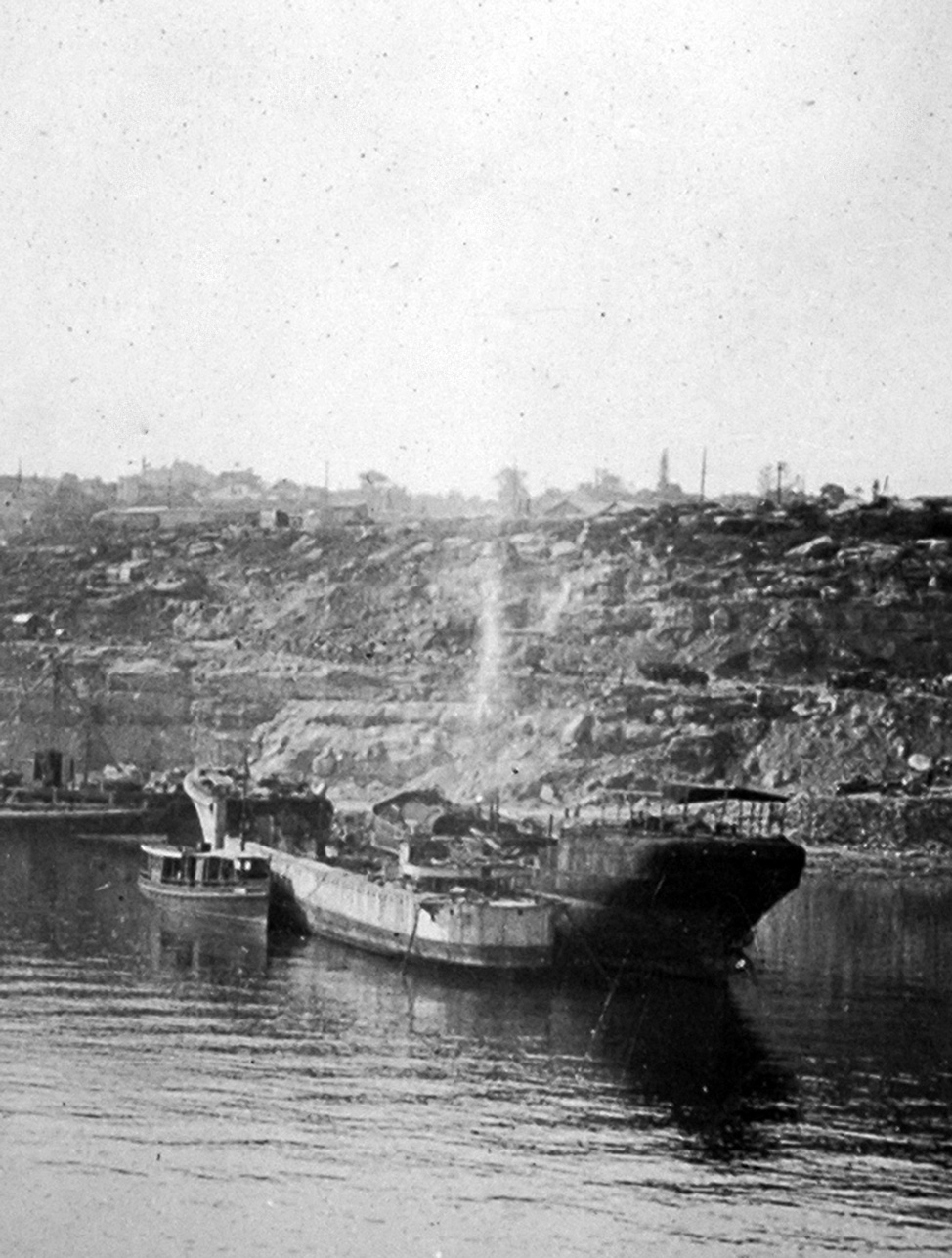
The sinking of Stalwart made headlines in the Sydney Morning Herald of 4 August 1939:
ONIONS WASHED ASHORE
Maroubra Littered
FEARS FOR OTHER BEACHES
Large numbers of onions were washed ashore yesterday on the southern end and centre of Maroubra Beach.
It is assumed that they were from the condemned consignment of 400 tons of Egyptian onions which were loaded into the hulk of the destroyer Stalwart when it was scuttled 20 miles off the Heads on July 22.
Many residents of Maroubra, including occupants of shacks, collected the onions, which were quite sound. It was considered that the sound onions had floated out from the hulk and that the bad ones had remained.
The onions were part of a consignment of 800 tons brought to Sydney from Egypt in the Dutch motorship Algenib.
Coogee, Bondi and other beaches to the north of Maroubra were free of the onions. It is thought that many other beaches will shortly receive them.
Officials from the two councils concerned — Randwick and Waverley — fear that a nuisance will be caused when the onions become bad.
When the onions were being taken to sea in the Stalwart it was reported that they were “rotten” but it was stated yesterday that not all the onions were bad.
Since Tuesday night there has been a strong wind inshore from the north-east.

No doubt the onions did not last long but parts of the destroyers which were retained may still be scattered in various parts of Australia. Certainly, one large item of equipment survives today on Cockatoo Island in Sydney: a Yarrow three-drum water-tube boiler.
Cockatoo Island Dockyard had a long history of steam turbine manufacture for ships of the RAN which were built in Australia, commencing in World War I and ending during the 1960s. After final assembly the turbine sets were given a steam test. It was never possible to carry out that test under load as the appropriate dynamometer equipment would have been very expensive, but the test proved that the turbines were in all respects correctly built and ready to be delivered to the ships intended to receive them. The Yarrow boiler from an S-class destroyer provided the steam for these tests.
Records revealing when this boiler was installed have not been located, but evidence suggests that it was shortly after World War II. In December 1946, an order was placed for four Daring-class destroyers, two to be built at Cockatoo Island (Voyager and Vampire) and two by HMA Naval Dockyard at Williamstown in Victoria (Vendetta and Waterhen). The second Williamstown ship was cancelled in 1953. Cockatoo Dockyard was tasked with building the steam turbines for all four ships.
The Daring-class destroyers were powered by English Electric geared turbines for a total power on two shafts of 54,000 SHP (27,000 SHP per shaft). They were then, and remain today, the most powerful steam turbines built in Australia. To build these turbines, the Commonwealth made a considerable investment in new plant and machinery at Cockatoo Island and it is likely that these improvements included the installation of the Yarrow boiler to support the shop tests of the turbines.
Later Cockatoo Dockyard would also build the English Electric steam turbines (15,000 SHP per shaft) for the Type 12 frigates/destroyer escorts built in Australia, HMA Ships Parramatta, Yarra, Stuart, Derwent, Swan and Torrens.
For all these ships’ machinery, the shop test would have been provided with steam from the Yarrow S-class destroyer boiler. That the boiler survives today is perhaps an accident of history. It escaped being sold when the dockyard was decommissioned at the beginning of the 1990s. Today, there cannot not be many Yarrow three-drum water-tube destroyer boilers dating from World War I left in the world. The over century-old boiler which today occupies Building 154 on Cockatoo Island in Sydney may not be unique, but it is certainly rare.
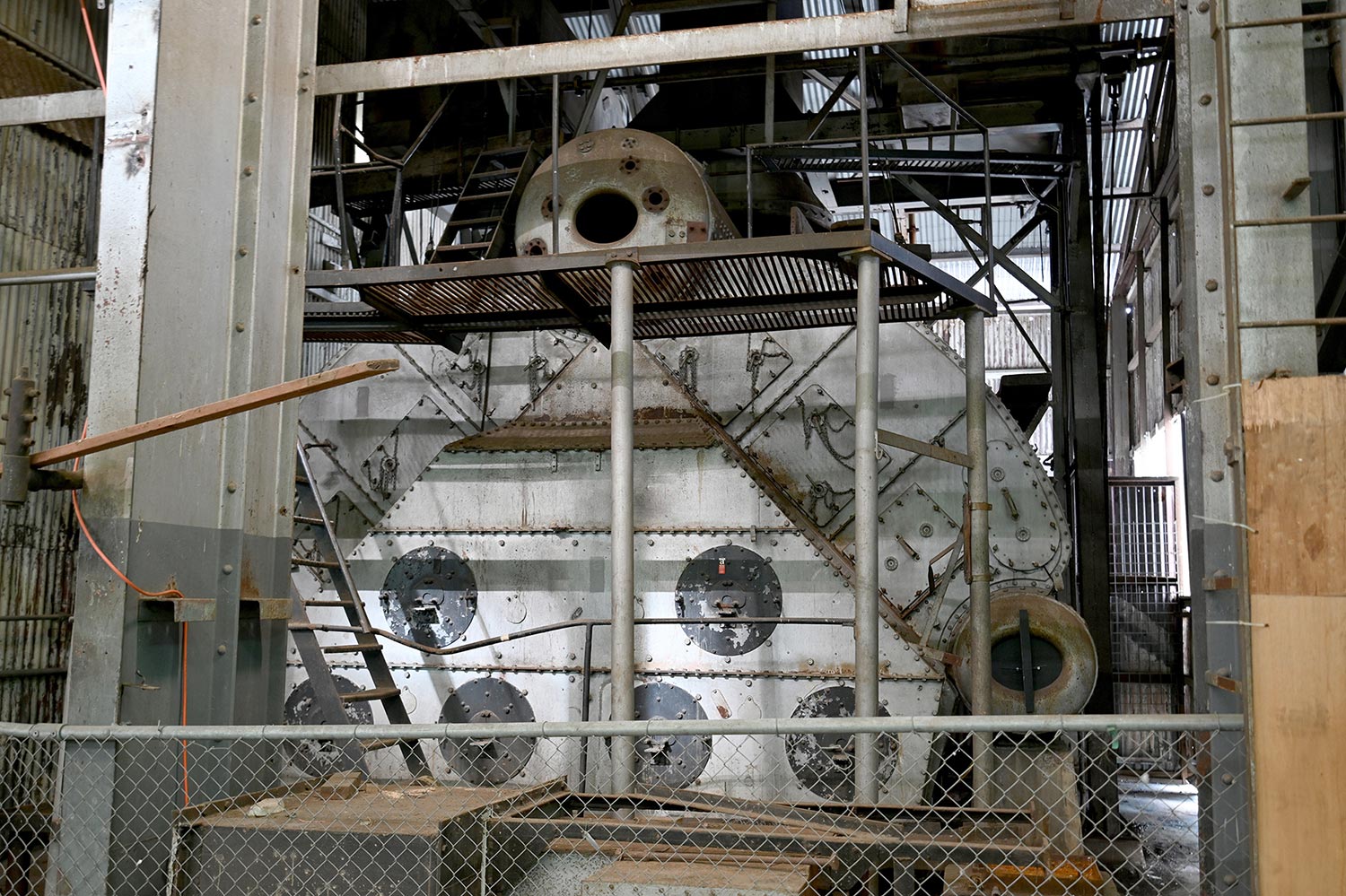
References
1. March, E J (1966), British Destroyers: A History of Development 1892–1953, Seeley Service & Co., London.
2. Stevens, D [Ed.] (2001), The Royal Australian Navy, The Australian Centenary History of Defence, Volume III, Oxford University Press, Melbourne.
3. Bastock, J (1975), Australia’s Ships of War, Angus and Robertson, Sydney.
